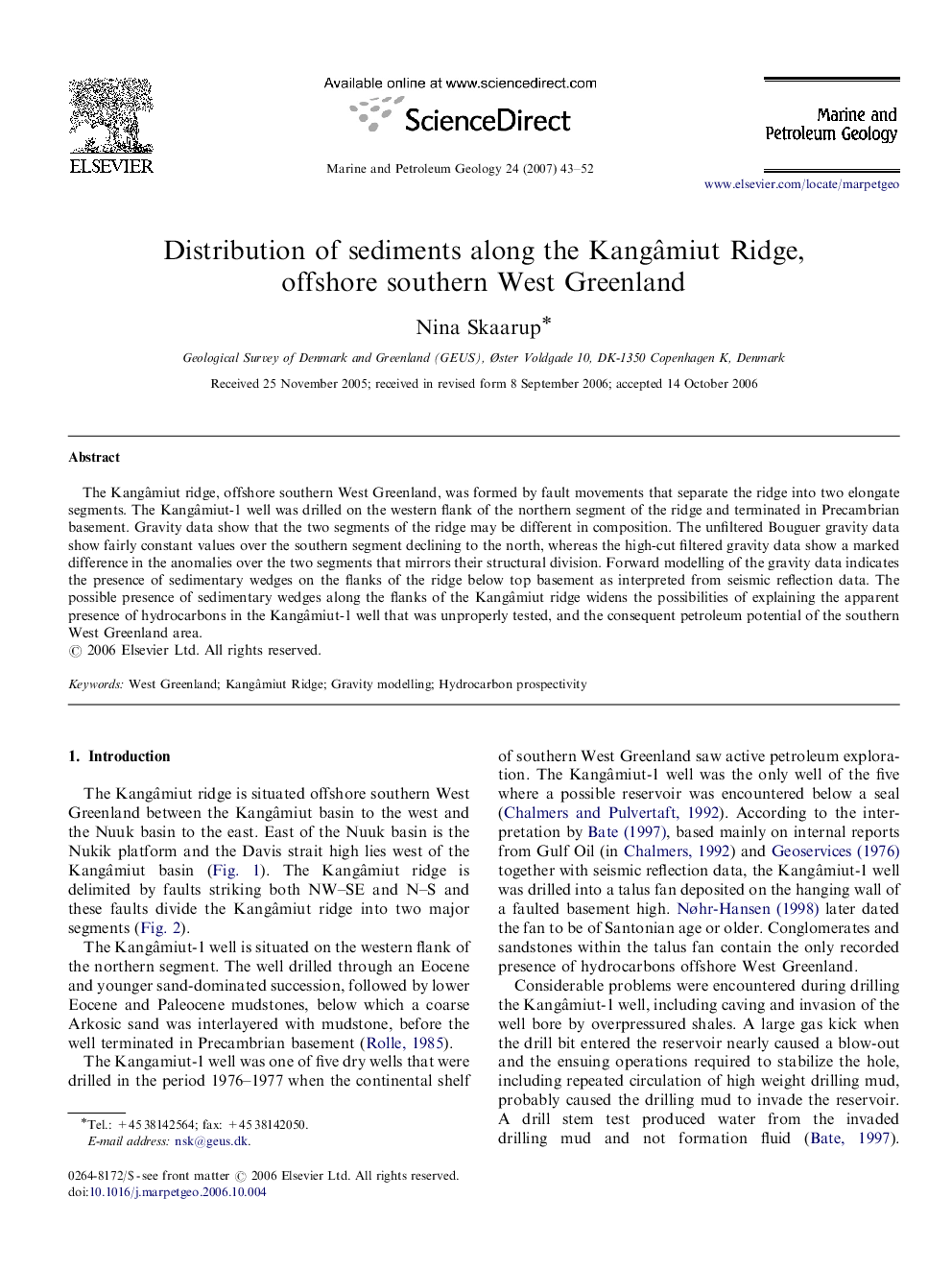| Article ID | Journal | Published Year | Pages | File Type |
|---|---|---|---|---|
| 4696516 | Marine and Petroleum Geology | 2007 | 10 Pages |
Abstract
The Kangâmiut ridge, offshore southern West Greenland, was formed by fault movements that separate the ridge into two elongate segments. The Kangâmiut-1 well was drilled on the western flank of the northern segment of the ridge and terminated in Precambrian basement. Gravity data show that the two segments of the ridge may be different in composition. The unfiltered Bouguer gravity data show fairly constant values over the southern segment declining to the north, whereas the high-cut filtered gravity data show a marked difference in the anomalies over the two segments that mirrors their structural division. Forward modelling of the gravity data indicates the presence of sedimentary wedges on the flanks of the ridge below top basement as interpreted from seismic reflection data. The possible presence of sedimentary wedges along the flanks of the Kangâmiut ridge widens the possibilities of explaining the apparent presence of hydrocarbons in the Kangâmiut-1 well that was unproperly tested, and the consequent petroleum potential of the southern West Greenland area.
Related Topics
Physical Sciences and Engineering
Earth and Planetary Sciences
Economic Geology
Authors
Nina Skaarup,
